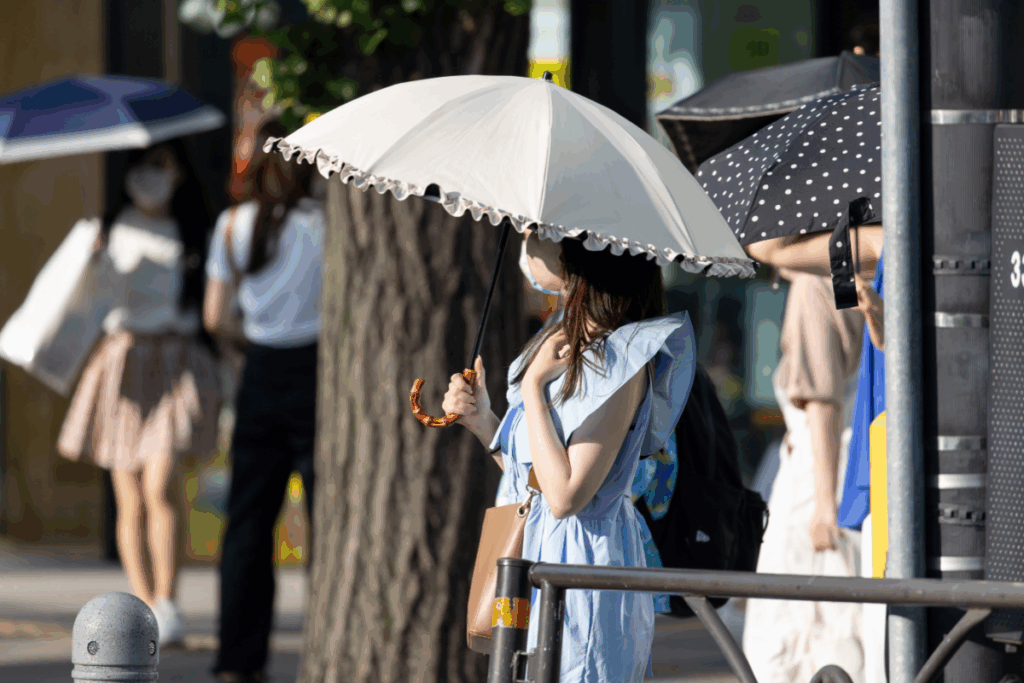Scorching New Highs in Isesaki
Japan’s Meteorological Agency has confirmed two unprecedented temperature readings in a single day, with mercury soaring to 41.6 °C and then climbing further to 41.8 °C in the city of Isesaki. These figures surpass any previous daily maximum ever recorded in the country. Isesaki, located in southern Gunma Prefecture in the northern Kanto region, eclipsed just days earlier a high of 41.2 °C that had been set in a western prefecture. Authorities responded by issuing heatstroke alerts across nearly every prefecture, urging residents to limit outdoor activity and remain hydrated.
Worsening Trends and Regional Impacts
This latest surge follows a month that meteorologists identified as the hottest on record since national record-keeping began more than a century ago. Average temperatures ran almost three degrees above the long-term norm, breaking previous markers by a significant margin. In the historic city of Kyoto, thermometers climbed above 40 °C for the first time at any of its monitoring stations. Such extremes have not been isolated to Japan alone; neighboring countries also reported heat anomalies, underscoring a broader pattern of regional warming.
The intense heat has strained infrastructure and livelihoods. Farmers in multiple prefectures report that rice paddies are parched due to a combination of scant rainfall and relentless sunshine. Some dams have reached critically low water levels, forcing local authorities to ration supplies. Public health services in cities under siege by the heatwave have recorded a spike in heat-related emergencies, particularly among elderly residents, who remain the most vulnerable.
Climate Change Signals and Ecological Effects
Scientists point to these record highs as further evidence of a shifting climate. Cherry trees, once celebrated for their precise spring bloom, are now flowering earlier or failing to blossom fully when winter temperatures remain unusually mild. Similarly, the snowcap of Mount Fuji failed to form at its customary time last season, delaying its iconic winter appearance by several weeks. These ecological shifts carry both cultural and economic consequences, as tourism tied to seasonal landmarks and festivals may suffer.
The Meteorological Agency warns that such extreme heat events are likely to become more frequent and severe without significant reductions in global greenhouse gas emissions. They caution that preserving public health will require long-term adaptation measures, including enhancing urban green spaces, investing in resilient water systems, and improving heatwave forecasting and warning protocols.
Proactive Measures and Public Guidance
In response to the emergency conditions, government and local officials have launched a series of initiatives. Cooling centers equipped with air conditioning have opened in community halls, schools, and libraries to provide refuge for those without access to adequate home cooling. Mobile hydration units patrol major urban areas, distributing water bottles and electrolytes to passersby.
Employers have been advised to adjust work schedules to avoid peak heat hours, shifting outdoor labor to early mornings or evenings. Educational campaigns on preventing heatstroke emphasize regular rest breaks, wearing lightweight clothing, and monitoring for signs of heat exhaustion.
With summer still underway, forecasters predict that temperatures may climb even higher before cooler conditions arrive. Residents are encouraged to stay informed through official alerts, check on neighbors—especially seniors—and enact personal heat-safety plans. While the full scale of this event remains to be seen, it serves as a stark reminder of the mounting challenges posed by a warming planet.



